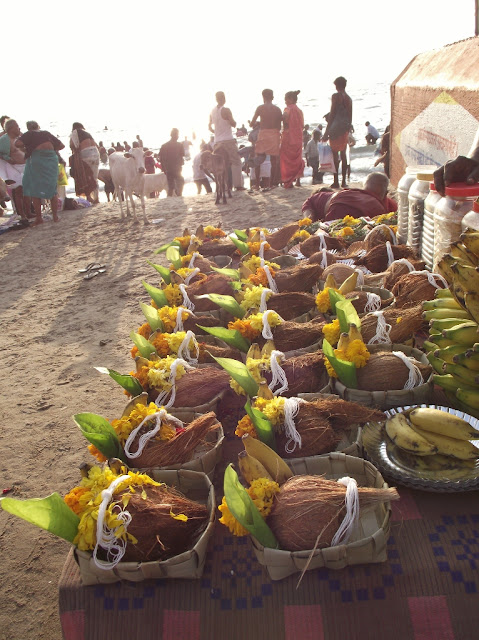Our last destination in India ’s south was the Gulf of Mannar biosphere reserve. This reserve, the first marine biosphere reserve in all of south and central Asia, encompasses 10,500 sq km of coastal waters stretching 300 km along the south-east coastline of the state of Tamil Nadu just opposite from the western coast of Sri Lanka Gulf of Mannar marine national park, as well as the core area of the biosphere reserve.
 From the town of
From the town of
South of Rameswaram stretches a narrow spit of sand known as
Adam’s Bridge .
About 10 km from town the spit disappears underwater to form a series of
partially submerged limestone shoals connecting India
and Sri Lanka Adam’s Bridge may have been
passable on foot as recently as 1480, when it was destroyed by a cyclone. The first mention of the bridge was by its
other name, Rama’s Bridge, in the ancient Indian Sanskrit epic Ramayana,
which refers to a bridge built by Lord Rama’s army of ape-men to allow Rama to
reach the kingdom of Lanka (Sri Lanka
The small town of
We wander the shore, speaking with fishermen, admiring the
catch of small boats not affected by the ban. Eventually we are driven by
hunger and the heat of the rising sun into a small dhaba in search of
breakfast. South Indian parottas were on
the menu – flaky flatbread beaten just a little bit to separate the
layers. Sitting right next to the
cooking station, every few minutes our table shook with a bang bang
bang as the cook slammed his fist down repeatedly on a pile of fresh parottas. Waving away the flies, we consumed parottas
and omelets from broad banana leaf plates, and then staggered home to nap
during the heat of the south Indian afternoon.






No comments:
Post a Comment